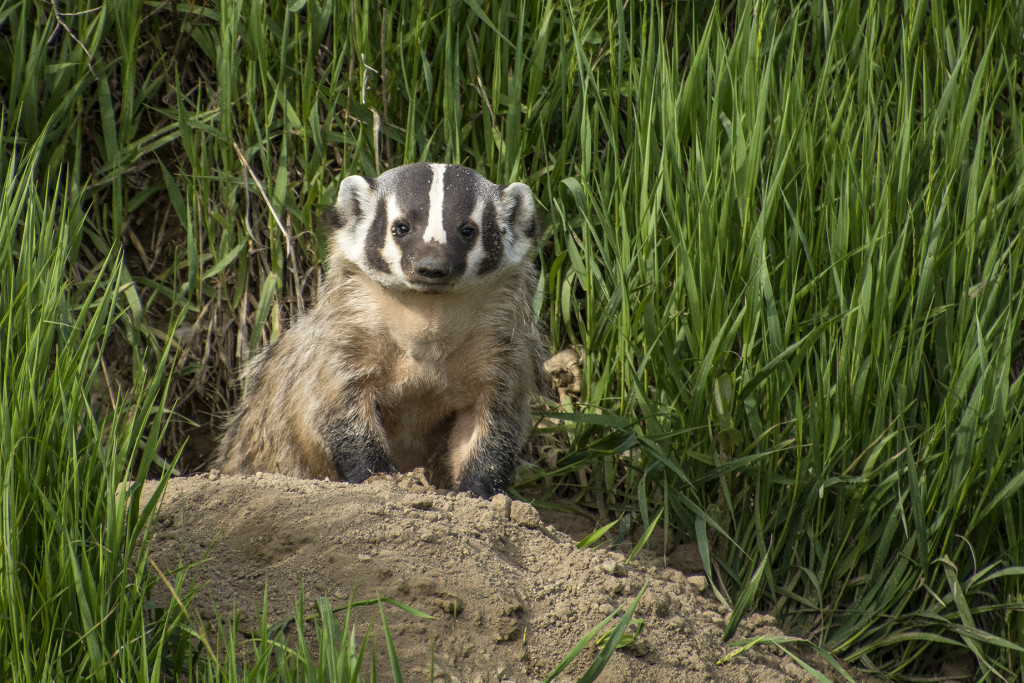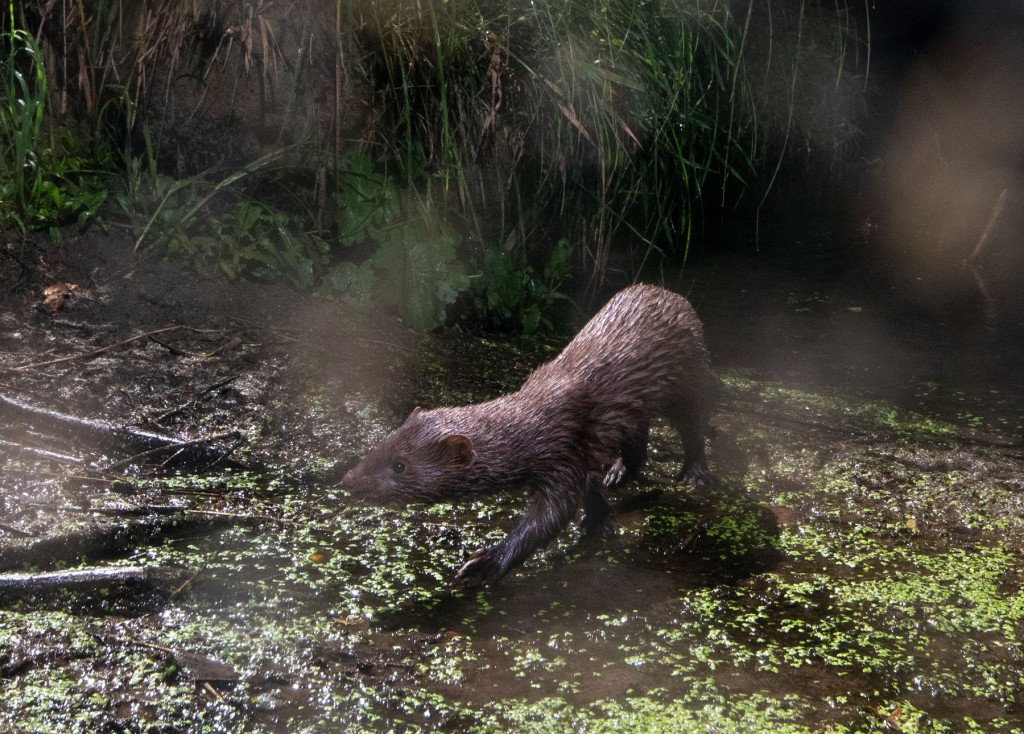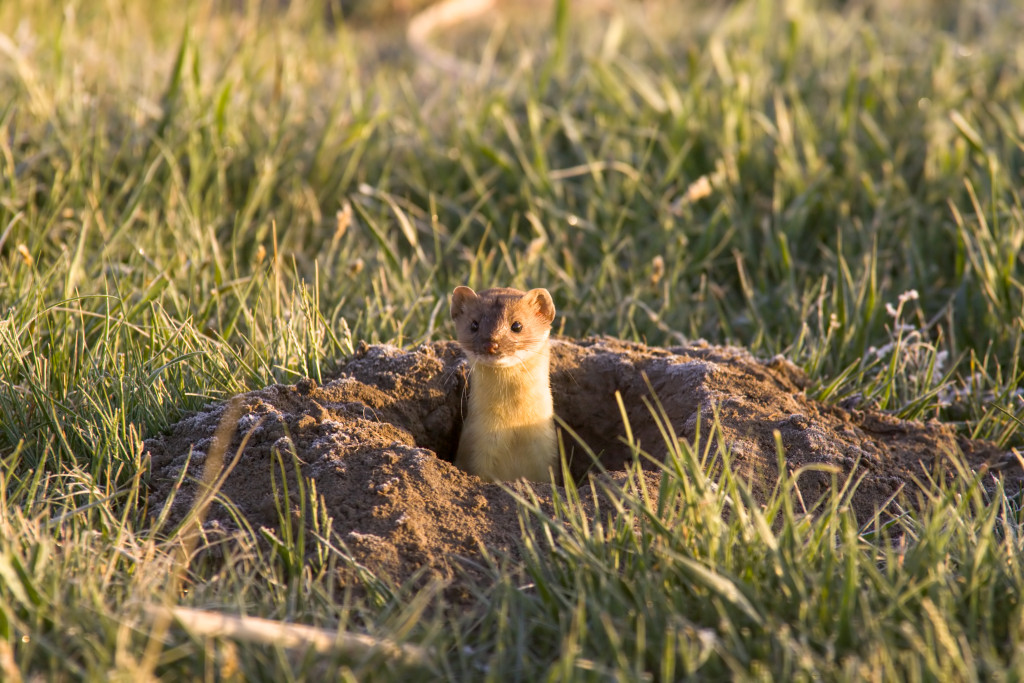
By Monica Macoubrie, Wildlife Education Specialist
When we think of stinky animals, our brains routinely conjure up images of a skunk spraying. However, you might be surprised to learn that skunks only make up a fraction of the “stinkers” in the animal kingdom. In Nebraska, we have an entire group of musty smellers known as mustelids, or Mustelidae.
Mustelids are a group of animals that have long, tube-shaped bodies, short legs, thick necks and small heads. Animals in this family include river otters, badgers, weasels, ferrets, minks, polecats, martens and wolverines, just to name a few. At one time, skunks were also in this group, but with recent molecular evidence, skunks are now recognized in their own family: Mephitidae.
Regardless, mustelids are a diverse group of animals that possess distinctive characteristics that allow them adapt to various habitats.
Diversity of Mustelids
Mustelidae is the largest family within the order Carnivora. It is comprised of approximately 56 species. Nebraska is home to five species: the American badger, North American river otter, least weasel, American mink and long-tailed weasel. Technically, Nebraska has six animals if you count the black-footed ferret, which was extirpated. Historical reports also indicate that in 1887, an individual wolverine was observed in the panhandle, in addition to an unconfirmed sighting in the same area in 1837.
This family is known to inhabit all continents except Australia and Antarctica and can be found in an assortment of habitats, which include both terrestrial, aquatic and marine environments. For instance, the American badger is found statewide and is one of the few fossorial (animal found primarily underground) mustelid species. On the other hand, the North American river otter is a semi-aquatic species, which lives on land and spends large amounts of time in just about any waterway in Nebraska.
Eating Habits
In general, mustelids are mainly carnivorous. They are proficient hunters, consuming a wide variety of invertebrate and vertebrate prey. Sometimes, they even eat items larger than themselves: The American mink, for instance, change its diet with the season. During the summer, it eats mainly frogs and crayfish, as well as small mammals, such as shrews, rabbits, muskrats and mice. However, this feisty, but petite, creature also has been known to grab ducks, other water birds and fish larger than itself.
The majority of mustelids spend time on the ground searching for food in crevices, burrows or under cover. All mustelids have a powerful bite. In many species, the large, postglenoid process locks the lower jaw into the upper, allowing the lower jaw to only move in the vertical plane without any rotary motion. The canine teeth are long, and well-developed carnassial teeth help to shear flesh from prey. The upper molars in the middle of the mouth are narrow, which gives them an hourglass shape.

Mustelid Communication
All mustelids have one thing in common: the musky smell emitted from their well-developed anal scent glands. The secretions of these scent glands serve various functions, which include facilitating territorial interactions, signaling reproductive states and other social contexts. In several species, scent-marking frequency corresponds with seasonal changes, mainly peaking during the species’ mating season.
Good eyesight and hearing are important for mustelids. However, their sense of smell is particularly useful. Not only do many species use scent cues to find food, scent marking is also a mustelid’s major form of communication
Weasels, for instance, are normally solitary, but they need to be aware of their neighbors. To do this, they use scent communication to keep track of others living in large home ranges that are often covered with thick vegetation. Hidden under their tail is a large pair of muscular sacs which contains up to 100 milliliters of musk. Even under the snow, the conditions are good for scent communication. The smell of musk can last a long time and can be advertised over long distances by the wind.
Musk
Musk is a thick, oily, yellowish fluid with a powerful and often unpleasant smell – at least to most humans. This musk is produced by modified skin glands which are grouped at one end of the sac and empty into it. Voluntary muscles control both the openings of the glands and the walls of the sac, so animals can expel musk at will.
Animals usually release small amounts of musk at a time, but a particularly frightened animal might empty the entire contents of its anal sacs at once — sometimes referred to as a “stink bomb” by trappers.
Along with musk, most carnivores will also make use of other strongly scented substances to communicate, such as scat and urine.

Mustelid Behavior
Narrow-bodied mustelids tend to be quick and agile, whereas broader-bodied mustelids, such as the American badger, display a lumbering gait. Some mustelid species are climbers and some are excellent swimmers.
Some species of mustelids are solitary while others are found in groups. In Nebraska, the North American river otter tends to live alone or in pairs. However, they often socialize in groups and are known for their playful, social behavior. In fact, a group of river otters is called a romp.
American badgers and black-footed ferrets are known to be more solitary, sometimes only coming together to breed.
Mustelid Reproduction
Mating systems vary within and among mustelid species. Many species tend to be polygynous and or promiscuous. However, all species require prolonged periods of copulation to induce ovulation of an unfertilized egg, and as such, copulation may last several hours before fertilization can be successful.
Most species will breed seasonally, but the length of the reproduction period will vary depending on the species and environment. One unique adaptation among mustelids is delayed implantation: Once the embryo is fertilized, it could take months (sometimes up to 10) to implant in the uterus of some species. Animals that live in seasonal climates are more likely to exhibit this adaptation.
Once implantation happens, females generally give birth to a single litter each season. Young mustelids are normally born needing extensive care from their mothers.
